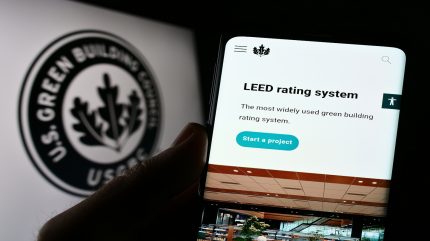
The US Green Building Council (USGBC) has unveiled Leadership in Energy and Environmental Design (LEED) v5, the most recent iteration of its LEED green building programme.
This launch marks an update to the sustainability standards within the construction industry, providing enhanced tools for certification and technology integration.
USGBC president and CEO Peter Templeton said: “Since its public launch 25 years ago, LEED has profoundly impacted millions of people in cities and communities around the world.
“LEED v5 raises the bar, further defining and evolving best practices and giving stakeholders across the building industry clear pathways to address today’s challenges to our health, climate, and communities.”
LEED v5’s development has incorporated feedback from thousands of professionals to address current environmental challenges.
The programme prioritises decarbonisation, with half of the points required for certification now related to reducing carbon emissions.

US Tariffs are shifting - will you react or anticipate?
Don’t let policy changes catch you off guard. Stay proactive with real-time data and expert analysis.
By GlobalDataIt targets emissions reductions throughout the building life cycle, including operations, embodied carbon, and transportation. Projects will undertake an operational carbon projection and develop a long-term decarbonisation strategy as part of the scheme.
In addition to environmental concerns, LEED v5 places emphasis on the quality of life. It introduces credits that promote the health and well-being of building occupants and the communities they serve.
Resilience is also a key focus, with the new standard encouraging climate resilience assessments for all projects.
These assessments are designed to improve hazard awareness, transparency of risks, and the conservation and restoration of ecosystems.
Following these assessments, LEED v5 provides strategies to incorporate resilience throughout the building’s life cycle.
USGBC chief products officer Sarah Zaleski said: “Investors, owners, occupants, and policymakers are asking for high-performing buildings that reduce emissions, mitigate climate risk, provide healthy, productive spaces, positively impact communities, and protect natural systems.
“LEED v5 provides the best practices and accountability to drive performance across all these dimensions, delivering tangible benefits to building owners and their stakeholders.”
LEED v5 is also claimed to ensure that certified projects can effectively communicate their sustainability strategies and performance. Impact reports will be made available to share with both internal and external stakeholders.



